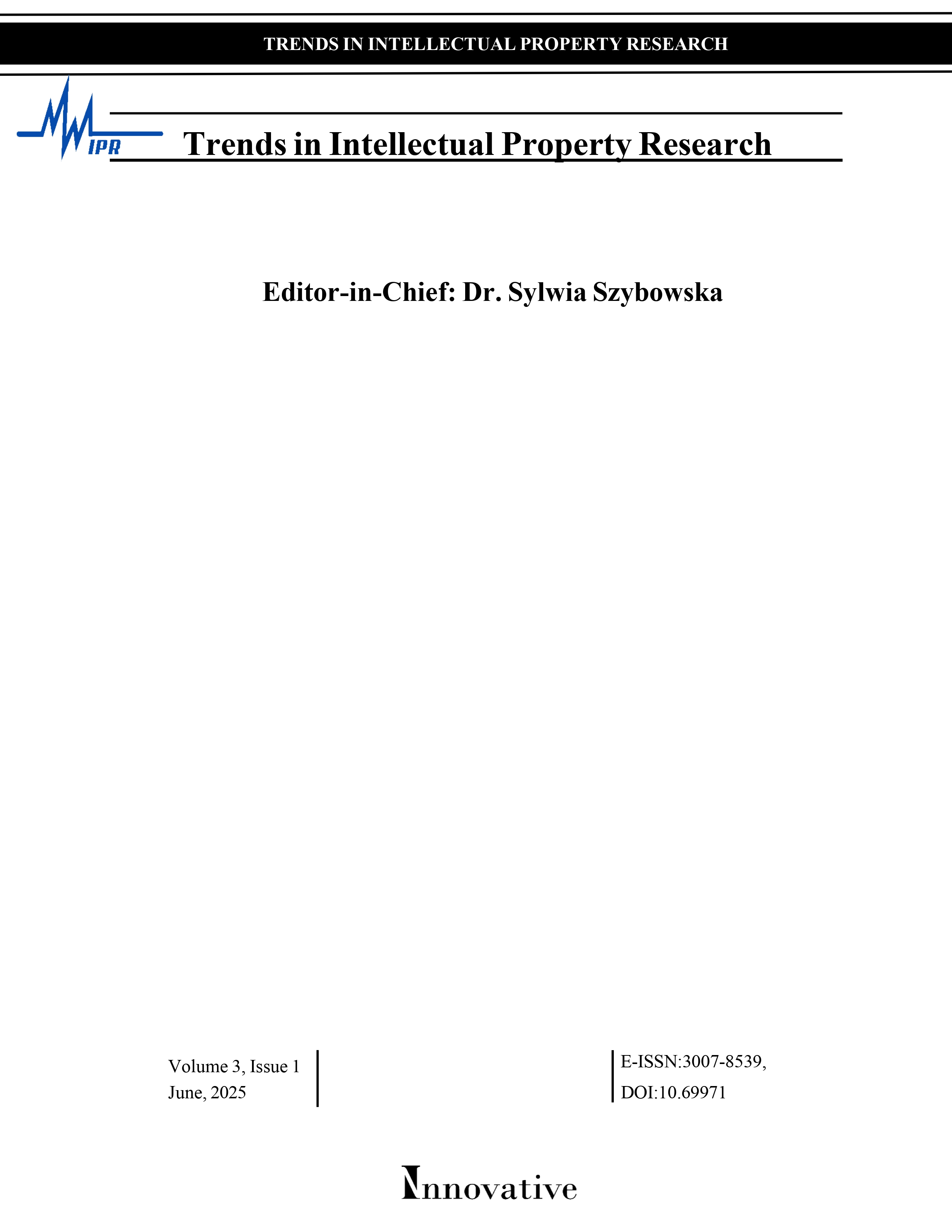Doctrine of Abuse of Dominance in the Digital Age
DOI:
https://doi.org/10.69971/tipr.3.1.2025.43Keywords:
Formalistic analysis, effects-based analysis, competition laws, theory of harm, abusive conduct in digital market, anti-competitive conduct, refusal to dealAbstract
Law of abuse of dominance forbids a dominant firm from misusing its position against competing firms. This doctrine is the foundational concept of harm, to analyze the adverse effect of a firm’s behavior, on the anticompetitive effects ultimately causing competitive harm. A formalistic and effect-based approach has been historically used to analyze this harm. However present digitalization focuses the inclination on effect-based approach. The uniqueness of digital markets and digital products is making it difficult for authorities to challenge the assessment of such harm. Two common abusive conducts refusal to deal and tying and bundling have been identified by authorities. This study explores the evolution of doctrine of abuse of dominance and the role played by theories of harm and economic theories on its modification over time. It further discusses the conduct of refusal and tying of the digital markets and the challenges it poses for assessment. The research suggests that peculiarity of digital products and markets assess the actual effect of firms’ conduct in a more judicious way, to categories harm. A collaborative approach can be explored for the emerging new avenues of harm to competition. Protection of consumer interests must alone remain the guiding factor for any policy made for digital markets, and that alone shall accord justifications for taking enforcement actions.
Downloads
References
Beckner, Frederick, and Steven C. Salop. 1999. Decision theory and antitrust rules. Antitrust Law Journal 67: 41-72. https://doi.org/10.2139/ssrn.200732
Condorelli, Daniele, and Jorge Padilla. 2020. Harnessing platform envelopment in the digital world. Journal of Competition Law & Economics 16: 143-187. https://doi.org/10.1093/joclec/nhaa006
Dworkin, Ronald. 1986. Law’s Empire. Harvard University Press, Massachusetts; USA.
Elhauge, Einer. 2003. Defining better monopolization standards. Stanford Law Review 56: 253-344. https://www.jstor.org/stable/1229611
Ezrachi, Ariel. 2017. Sponge. Journal of Antitrust Enforcement 5: 49-75. https://doi.org/10.1093/jaenfo/jnw011
Frank H. 1984.Limits of antitrust. Texas Law Review 63:1-40.
Garner, Bryan A and Antonin Scalia. 2012. Garner, Reading Law: The Interpretation of Legal Texts. St. Paul Thomson, MN: USA. https://jm919846758.wordpress.com/wp-content/uploads/2020/09/rlilt.pdf
Holzweber, Stefan. 2018. Tying and bundling in the digital era. European Competition Journal 14: 342-366. https://doi.org/10.1080/17441056.2018.1533360
Katz, Michael. 2019. Platform economics and antitrust enforcement: a little knowledge is a dangerous thing. Journal of Economics & Management Strategy 28: 138-152. https://econpapers.repec.org/article/blajemstr/v_3a28_3ay_3a2019_3ai_3a1_3ap_3a138-152.htm
Kennedy, Duncan. 1973. Legal formality. The Journal of Legal Studies 2: 351-398. https://duncankennedy.net/wp-content/uploads/2024/01/legal-formality.pdf
Kovacic, William E. 2003. The modern evolution of U.S. competition policy enforcement norms. Antitrust Law Journal 71: 401-456. https://doi.org/10.2139/ssrn.332940
Lambert, Thomas A., and Alden F. Abbott. 2015. Recognizing the limits of antitrust: the roberts court versus the enforcement agencies. Journal of Competition Law & Economics. https://ssrn.com/abstract=2596660
Langer, Jurian. 2007.Tying and Bundling as a Leveraging Concern under EC Competition Law. Alphen aan den Rijn: Kluwer Law International.
Lindeboom, Justin. 2022. Formalism in competition law. Journal of Competition Law & Economics 18: 832–857. https://ssrn.com/abstract=4058755
Luhmann, Niklas. 1992. Operational closure and structural coupling: the differentiation of the legal system. Cardozo Law Review 13:1419-1440. https://larc.cardozo.yu.edu/clr/vol13/iss5/2/
Orbach, Barak, and Grace Campbell Rebling. 2018. The antitrust curse of bigness. Southern California Law Review 85: 605. https://southerncalifornialawreview.com/wp-content/uploads/2018/01/85_605.pdf
Peeperkorn, Luc, and Vincent Verouden. 2014. The Economics of Competition. Oxford: Oxford University Press, UK.
Posner, Richard A. 1979. The Chicago School of Antitrust Analysis. University of Pennsylvania Law Review 127: 928.
Sibony, Anne-Lise. 2012. Limits of Imports from Economics into Competition Law. In: The Global Limits of Easterbrook Competition Law. Eds. Ioanis Lianos and Daniel Sokol/Stanford University Press, USA. https://papers.ssrn.com/sol3/papers.cfm?abstract_id=3685194
Schauer, Frederick. 1988. Formalism. Yale Law Journal 97: 509-548. https://philarchive.org/rec/SCHF-48
Sherwin, Emily. 2006. Judges as Rulemakers. The University of Chicago Law Review 73-13-70.
Siciliani, Paolo, Christine Riefa, and Harriet Gamper. 2019.Consumer Theories of Harm: An Economic Approach to Consumer Law Enforcement and Policy Making. Bloomsbury Publishing, London: UK.
Sivinski, Greg, Alex Okuliar, and Lars Kjolbye. 2017. Is big data a big deal? Competition law approaches big data. European Competition Journal 13: 199-227. https://doi.org/10.1080/17441056.2017.1362866
Stucke, Maurice E. 2012. What is competition? In: The Goals of Competition Law, edited by Daniel Zimmer. Edward Elgar, Cheltenham: UK.
Yan, Xingyu. 2019. Theories of harm on abuse of dominance. University of Groningen PhD Thesis. https://pure.rug.nl/ws/portalfiles/portal/81067423/Complete_thesis.pdf
Downloads
Published
Issue
Section
License
Copyright (c) 2025 Authors

This work is licensed under a Creative Commons Attribution 4.0 International License.


